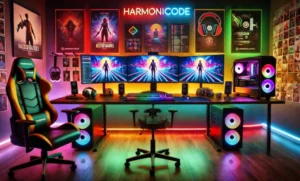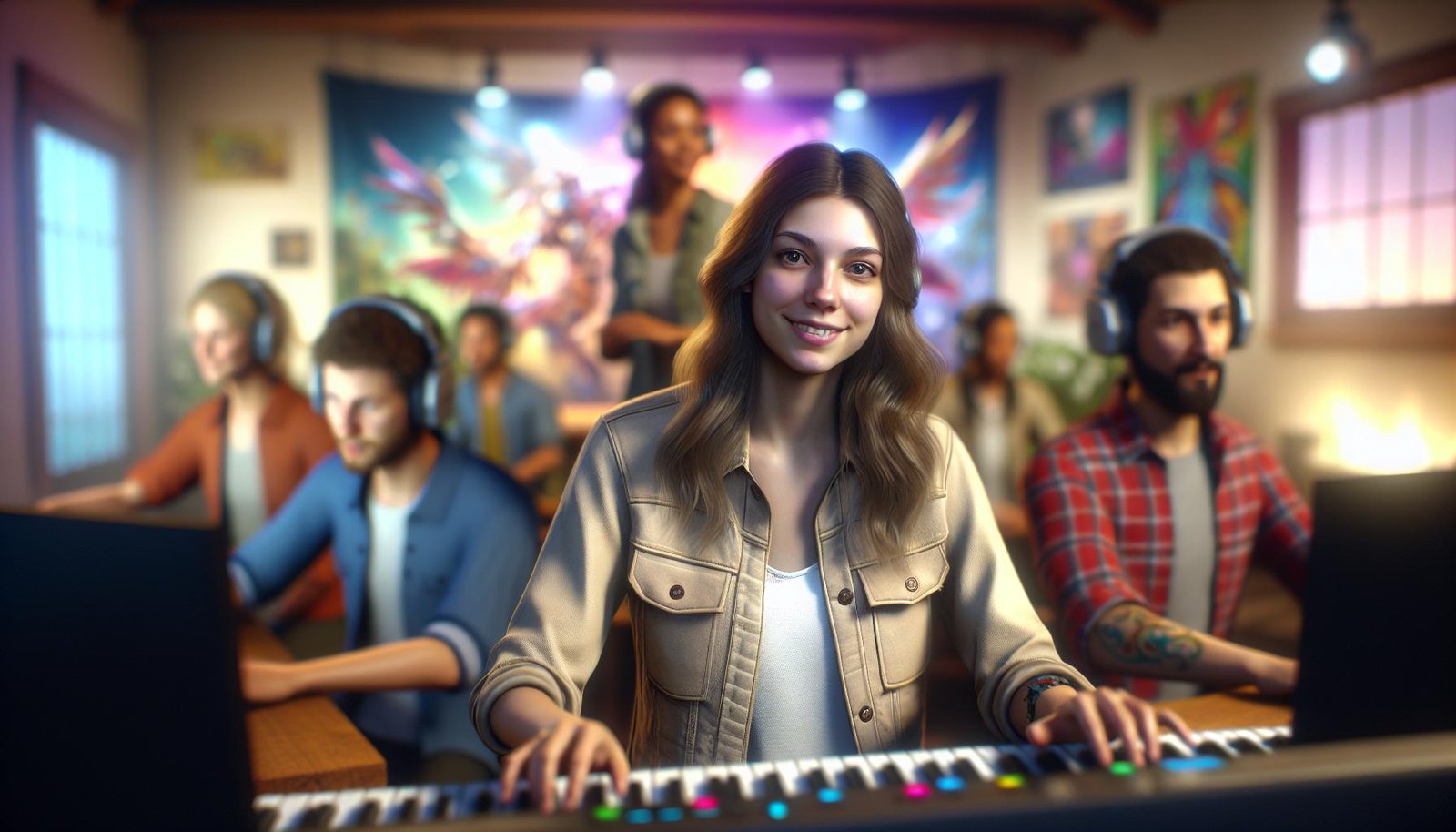Exploring Harmonicode: The Future of Music Composition and Technology
Introduction to Harmonicode
Harmonicode represents a revolutionary approach in the interplay between music composition and technology. This innovative concept merges traditional music theory with cutting-edge computational methods, significantly influencing how music is created, analyzed, and understood. The origins of harmonicode can be traced back to the increasing reliance on digital tech within the music industry, where artists and composers began to explore ways in which coding could facilitate new avenues of creativity.
At its core, harmonicode serves as a framework that utilizes algorithms and mathematical models to produce harmonious compositions. By employing this method, composers are no longer just relying on intuition and traditional knowledge; they now have access to a systematic way of creating music that adheres to established principles while also allowing for experimentation. This integration has garnered attention from both musicians who seek new methods of inspiration and technologists interested in the possibilities of automated creativity.
The significance of harmonicode in contemporary music composition lies in its ability to enhance the creative process. Musicians can utilize harmonicode to generate musical sequences that maintain coherence and structure, exploring complex harmonies and sophisticated patterns that may be difficult to achieve through conventional means alone. As technology continues to evolve, harmonicode has become a focal point for discussions surrounding the future of music, inspiring a generation of musicians, coders, and enthusiasts to collaborate and innovate.
Moreover, the increasing popularity of harmonicode is evident through various educational platforms and software tools emerging in the market. These resources not only teach the principles of harmonicode but also provide practical applications for its implementation in music projects. By bridging the gap between theoretical understanding and practical application, harmonicode is poised to shape the future landscape of music composition, making significant contributions to both the musical and technological domains.
The Mechanics of Harmonicode
The technological landscape of music composition has been significantly transformed with the advent of harmonicode. This system employs a set of rules and algorithms to generate music, facilitating creative processes for composers and musicians alike. At its core, harmonicode is built upon the principles of harmony, rhythm, and melodic structure. This structured approach allows for the systematic generation of musical materials that are coherent and aesthetically pleasing.
To comprehend how harmonicode operates, it is essential to explore its primary components. These include chord progressions, scale patterns, and rhythmic structures. By analyzing a wide array of musical styles, harmonicode encapsulates these elements, allowing them to be recombined in innovative ways. This synthesis not only aids in music generation but also offers analytical insights into existing compositions, enabling users to deconstruct musical works into their harmonic foundations.
There are numerous software applications and tools that employ harmonicode principles for music creation. Notable examples include digital audio workstations (DAWs) that incorporate harmonic algorithms to assist musicians in composing. Programs such as Ableton Live and Logic Pro utilize harmonicode techniques to suggest chord progressions or generate harmonies based on a user’s input. These tools make it feasible for individuals, regardless of their technical level, to engage in the composition process, thereby democratizing music creation.
Harmonicode’s influence extends beyond composition techniques; it fosters a deeper understanding of music theory and encourages experimentation with different musical ideas. As composers and enthusiasts explore its functionalities, they find themselves equipped with an enhanced ability to innovate and create. Consequently, harmonicode serves not only as a guide in music generation but also as a bridge connecting traditional music education to modern technology-driven methodologies.

Applications of Harmonicode in Modern Music
The integration of harmonicode into contemporary music production has resulted in a transformative shift in the way musicians and producers approach composition and sound design. This innovative tool facilitates a deeper understanding of musical structures and enables artists to experiment with new sonic possibilities, ultimately enhancing the creative process. By leveraging harmonicode, musicians can produce complex harmonic sequences that might be challenging to achieve through traditional means Learn how to improve your online presence with tips from this site, this platform, this resource, this blog, this page, this guide, this tool, this network, this article, and LushWear.
One prominent application of harmonicode is its ability to analyze existing music compositions. Music producers can utilize this technology to dissect classic pieces, gaining insights into effective chord progressions and melodic structures. In doing so, they can apply these principles to their own work, resulting in compositions that resonate with audiences while maintaining an element of originality. This analytical aspect of harmonicode empowers artists to learn from the masters and adapt successful concepts into their music.
Moreover, harmonicode offers unique capabilities within digital audio workstations (DAWs), streamlining workflow for music creators. Producers can automate chord changes and modulations, saving valuable time during the composition process. This functionality allows musicians to focus more on creativity rather than technical constraints. Additionally, harmonicode’s algorithm can suggest harmonies that complement a chosen melody, providing inspiration and expanding the compositional palette.
Several renowned musicians and producers have successfully incorporated harmonicode into their creative processes. For instance, electronic artist James Blake has used harmonicode-derived techniques to layer sounds and create rich, immersive soundscapes in his work. Similarly, film composer Hans Zimmer has embraced this technology to generate cinematic compositions that combine traditional orchestration with modern elements. These examples underscore the versatility of harmonicode in diverse musical genres and its potential to redefine musical creativity.
Looking Ahead: The Future of Harmonicode
The future of harmonicode is poised to be shaped by a myriad of technological advancements, particularly in the realms of artificial intelligence and machine learning. As these fields evolve, they have the potential to significantly enhance the capabilities of harmonicode, providing musicians with innovative tools to explore and create music in ways previously unimaginable. One promising development is the integration of AI-driven algorithms that can analyze musical structures and suggest harmonic progressions that align with a composer’s unique artistic vision. This could lead to a more intuitive and efficient process, where the limitations of traditional composition are expanded.
Additionally, machine learning can offer personalized feedback on compositions, assessing elements such as melody, harmony, and rhythm. By leveraging vast databases of existing music, these systems can create harmonies that resonate with contemporary trends while maintaining the individuality of the artist’s voice. Such technologies could foster collaboration between human composers and intelligent systems, leading to a richer diversity in musical expression within harmonicode.
Furthermore, as harmonicode gains traction in the music community, we may witness the emergence of collaborative platforms where musicians can share their harmonicode projects. This communal approach could result in a wealth of shared knowledge and innovation, propelling the music composition landscape forward. The idea of an online ecosystem where artists experiment, iterate, and refine their works will enhance the creative process and promote the exchange of ideas, leading to new styles influenced by diverse musical influences.
In conclusion, the fusion of harmonicode with advanced technologies heralds exciting possibilities. Musicians are encouraged to actively engage with these innovations as they explore their own unique soundscapes. By adopting harmonicode, individuals can be at the forefront of this evolving musical paradigm, contributing to its trajectory in the future.

Post Comment